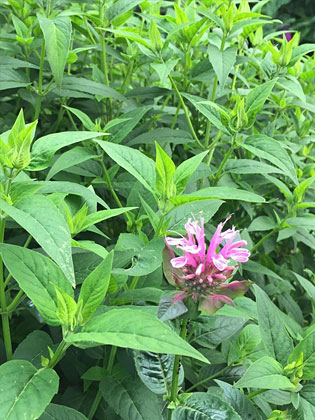
- Herb
- Food forest
- Bees and butterflies
- Edible flowers
- Edimentals
- Medicinal
Wild Bergamot
Monarda fistulosa
Attractive perennial wildflower native to North America. Loved by bees and butterflies. Flowers and eaves used for herbal teas and remedies. Great as an edimental in herbaceous borders.
PLANT TYPE Herb
PLANT HABIT Perennial
USES Culinary, Medicinal, Pollinators, Ornamental
DESCRIPTION
This perennial wildflower native to North America. Works well as an edimental in herbaceous borders. Flowering season from early summer to early autumn. Whilst a member of the mint family, its clump forming and does not spread like mint.
Loved by bees and butterflies and in the UK popular with bumblebees. Called “Bee Balm” as it has been used to treat bee stings - usually by Americans, where it is pronounced: “Bee bum”. On that note: saying “Space ghettos” in an American accent comes out as “Spice girls” in perfect Scottish.
Flowers are edible and make a colourful addition to salads. Also makes a pleasant herbal tea. Native Americans used this plant as a cure for a large number of ailments. Tea was brewed from the leaves to treat fevers, colds, digestive issues, insomnia, flatulence, sore throat and other conditions.
RECOMMENDED LOCATION Pot, Forest garden, Wildlife garden, Ornamental garden
Aspect Full sun, Moist full sun, Dry full sun
Height 0.6-1.2m
Spread 0.6-0.9m
Hardiness Hardy in the UK
Management and care Dead heading flowers encourages new blooms.
Origin/history
Perennial wildflower native to North America. In the wild, Wild Bergamot naturally grows in prairies, open meadows, open woods, and along roadsides. It can grow in poor soil. Also, as it is drought tolerant, and will survive hot Summers in well drained areas.
Wild Bergamot (Mondara fisulosa) is often confused with Mondara didyma which has redder flowers and prefers moister environs. They are related as they are in the same genus, look similar, but are completely different species.
